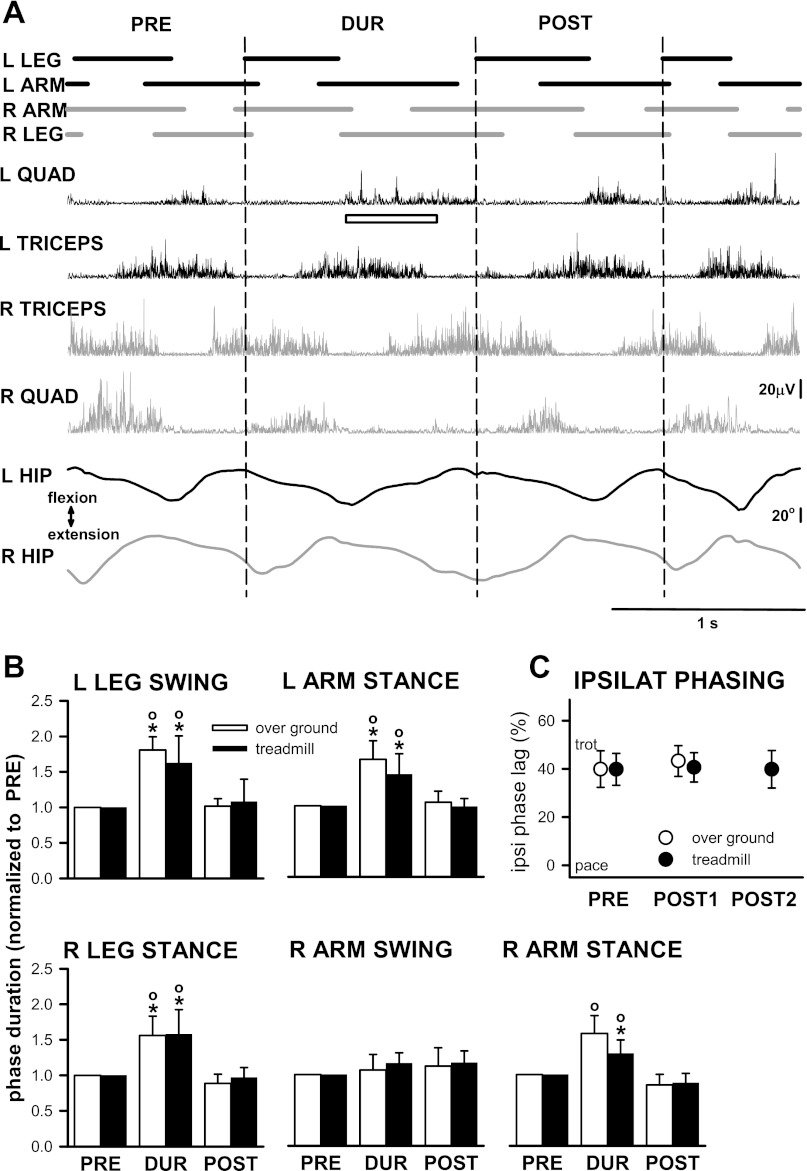Fig. 7.
Holding the left leg in swing prolongs stance of the other limbs and resets the crawling pattern. Traces, organized as in Fig. 2, show unperturbed (pre), perturbed (dur), and post (post) crawling cycles for a single perturbation (A). Group data from overground and treadmill perturbations are shown in B. Ongoing stance of the left arm and right leg were prolonged. The right arm, in swing at the time of the perturbation, enters stance at the regular time and the subsequent stance phase is perturbed instead (r arm stance in B). Interlimb coordination, as indicated by ipsilateral phasing, is unchanged by the perturbation (C). Bar plots: means ± SD across infants (B, overground: 6 infants [9 perturbations], treadmill: 9 infants [19 perturbations]); * indicates significant difference from PRE,° indicates significant difference from POST (repeated-measures ANOVA or Kruskal-Wallis ANOVA on ranks). Ipsilateral phasing from individual perturbations (C), no significant difference between groups (paired t-test [overground, 9 perturbations from 7 infants], or repeated-measures ANOVA [treadmill, POST 1: 21 perturbations from 9 infants, POST 2: 16 perturbations from 8 infants]).

